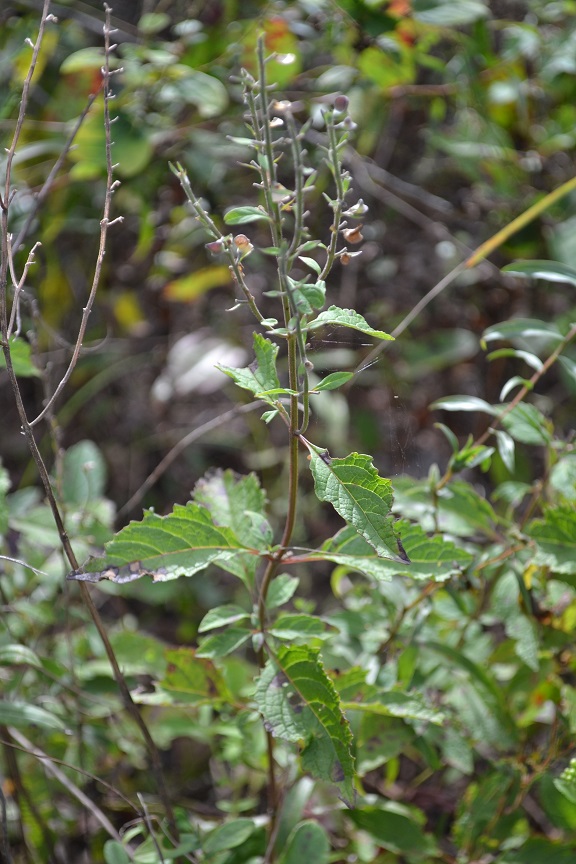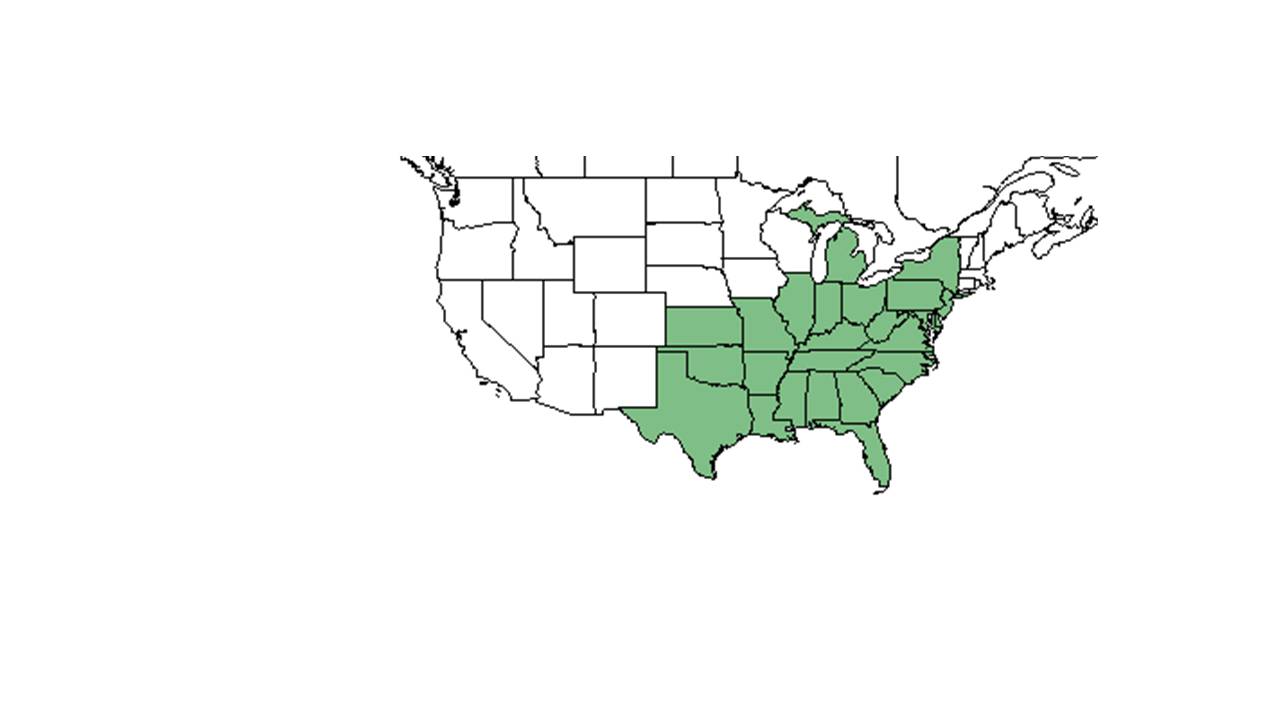Difference between revisions of "Scutellaria elliptica"
HaleighJoM (talk | contribs) (→Ecology) |
|||
| (20 intermediate revisions by 9 users not shown) | |||
| Line 3: | Line 3: | ||
{{taxobox | {{taxobox | ||
| name = Scutellaria elliptica | | name = Scutellaria elliptica | ||
| − | | image = | + | | image = Scutellaria elliptica.JPG |
| − | | image_caption = | + | | image_caption = Photo by Kevin Robertson |
| regnum = Plantae | | regnum = Plantae | ||
| divisio = Magnoliophyta – Flowering plants | | divisio = Magnoliophyta – Flowering plants | ||
| Line 15: | Line 15: | ||
| binomial_authority = Muhl. ex Spreng. | | binomial_authority = Muhl. ex Spreng. | ||
| range_map = SCUT_ELLI_dist.jpg | | range_map = SCUT_ELLI_dist.jpg | ||
| − | | range_map_caption = Natural range of ''Scutellaria elliptica'' from USDA NRCS [http:// | + | | range_map_caption = Natural range of ''Scutellaria elliptica'' from USDA NRCS [http://plants.usda.gov/core/profile?symbol=SCEL Plants Database]. |
}} | }} | ||
| − | Common name: | + | Common name: Hairy skullcap |
| + | ==Taxonomic notes== | ||
| + | Synonyms: ''S. ovalifolia'' Pers.''; S. ovalifolia'' ssp. ''mollis'' Epling | ||
| + | |||
| + | Variety: ''Scutellaria elliptica'' Muhlenberg ex Sprengel var. ''elliptica''; ''Scutellaria elliptica'' Muhlenberg ex. Sprengel var. ''hirsuta'' (Short & Peter) Fernald | ||
| + | |||
==Description== | ==Description== | ||
<!-- Basic life history facts such as annual/perrenial, monoecious/dioecious, root morphology, seed type, etc. --> | <!-- Basic life history facts such as annual/perrenial, monoecious/dioecious, root morphology, seed type, etc. --> | ||
| + | "Perennial herbs with quadrangular, erect to ascending stems; stolons absent, or present and underground. Leaves sessile or petiolate. Racemes bracteate, often paniculate. Calyx zygomorphic, 2-lobed, the upper lobe crested, very small in flower and enlarging in fruit; corolla zygomorphic , upper lip galeate, 3-lobed, lower lip unlobed, usually white in the throat. The blue-flowered species occasionally have white flowered forms. Stamens 4, exserted; stigma 2-parted. Mericarps dark brown to black, closely set with tubercles or papillae in somewhat concentric rings, rounded, often somewhat flattened."<ref name="Radford et al 1964">Radford, Albert E., Harry E. Ahles, and C. Ritchie Bell. Manual of the Vascular Flora of the Carolinas. 1964, 1968. The University of North Carolina Press. 902. Print.</ref > | ||
| + | |||
| + | "Plant not stoloniferous, forming clumps of 1-3, rarely more, stems. Stems erect, 1.5-8 dm tall, simple or branched above, pubescent, with 3-5 pairs of leaves below branches or inflorescence. Leaves elliptic to rhombic-ovate, 3-8 cm long, 1.5-4 cm wide, acute to obtuse, crenate, base cuneate to truncate; petioles usually obscured by decurrent blade tissue. Racemes 1-5, rarely more, 3-8 cm long; bracts reduced upward. Calyx 2-3 mm long in flower, 6-8 mm in fruit; corolla blue to violet, rarely white, 1.2-2 cm long. Mericarps tuberculate, 1.5-1.7 mm long."<ref name="Radford et al 1964"/> | ||
==Distribution== | ==Distribution== | ||
==Ecology== | ==Ecology== | ||
===Habitat=== <!--Natural communities, human disturbed habitats, topography, hydrology, soils, light, fire regime requirements for removal of competition, etc.--> | ===Habitat=== <!--Natural communities, human disturbed habitats, topography, hydrology, soils, light, fire regime requirements for removal of competition, etc.--> | ||
| − | ===Phenology=== <!--Timing off flowering, fruiting, seed dispersal, and environmental triggers. Cite PanFlora website if appropriate: http://www.gilnelson.com/PanFlora/ --> | + | In the Coastal Plain in Florida, ''S. elliptica'' can occur in upland pines.<ref name="FSU Herbarium">Florida State University Robert K. Godfrey Herbarium database. URL: [http://herbarium.bio.fsu.edu http://herbarium.bio.fsu.edu]. Last accessed: July 2015. Collectors: R. A. Norris, Robert K. Godfrey. States and Counties: Florida: Leon. Compiled by Tall Timbers Research Station and Land Conservancy.</ref> Associated species include pines, sweetgum and dogwood.<ref name="FSU Herbarium"/> ''S. elliptica'' responds negatively to agricultural-based soil disturbance in South Carolina coastal plain communities. This marks it as a possible indicator species for remnant woodland.<ref>Brudvig, L.A., E Grman, C.W. Habeck, and J.A. Ledvina. (2013). Strong legacy of agricultural land use on soils and understory plant communities in longleaf pine woodlands. Forest Ecology and Management 310: 944-955.</ref> |
| − | ===Seed dispersal=== | + | <!--===Phenology===--> <!--Timing off flowering, fruiting, seed dispersal, and environmental triggers. Cite PanFlora website if appropriate: http://www.gilnelson.com/PanFlora/ --> |
| − | ===Seed bank and germination=== | + | <!--===Seed dispersal===--> |
| − | ===Fire ecology=== <!--Fire tolerance, fire dependence, adaptive fire responses--> | + | <!--===Seed bank and germination===--> |
| − | ===Pollination=== | + | <!--===Fire ecology===--> <!--Fire tolerance, fire dependence, adaptive fire responses--> |
| − | === | + | <!--===Pollination===--> |
| − | ===Diseases and parasites=== | + | <!--===Herbivory and toxicology===<!--Common herbivores, granivory, insect hosting, poisonous chemicals, allelopathy, etc--> |
| − | ==Conservation and | + | <!--===Diseases and parasites===--> |
| − | == | + | |
| + | ==Conservation, cultivation, and restoration== | ||
| + | |||
| + | ==Cultural use== | ||
| + | |||
==Photo Gallery== | ==Photo Gallery== | ||
| + | <gallery widths=180px> | ||
| + | </gallery> | ||
| + | |||
==References and notes== | ==References and notes== | ||
Latest revision as of 16:05, 15 July 2022
| Scutellaria elliptica | |
|---|---|

| |
| Photo by Kevin Robertson | |
| Scientific classification | |
| Kingdom: | Plantae |
| Division: | Magnoliophyta – Flowering plants |
| Class: | Magnoliopsida – Dicotyledons |
| Order: | Lamiales |
| Family: | Lamiaceae ⁄ Labiatae |
| Genus: | Scutellaria |
| Species: | S. elliptica |
| Binomial name | |
| Scutellaria elliptica Muhl. ex Spreng. | |

| |
| Natural range of Scutellaria elliptica from USDA NRCS Plants Database. | |
Common name: Hairy skullcap
Contents
Taxonomic notes
Synonyms: S. ovalifolia Pers.; S. ovalifolia ssp. mollis Epling
Variety: Scutellaria elliptica Muhlenberg ex Sprengel var. elliptica; Scutellaria elliptica Muhlenberg ex. Sprengel var. hirsuta (Short & Peter) Fernald
Description
"Perennial herbs with quadrangular, erect to ascending stems; stolons absent, or present and underground. Leaves sessile or petiolate. Racemes bracteate, often paniculate. Calyx zygomorphic, 2-lobed, the upper lobe crested, very small in flower and enlarging in fruit; corolla zygomorphic , upper lip galeate, 3-lobed, lower lip unlobed, usually white in the throat. The blue-flowered species occasionally have white flowered forms. Stamens 4, exserted; stigma 2-parted. Mericarps dark brown to black, closely set with tubercles or papillae in somewhat concentric rings, rounded, often somewhat flattened."[1]
"Plant not stoloniferous, forming clumps of 1-3, rarely more, stems. Stems erect, 1.5-8 dm tall, simple or branched above, pubescent, with 3-5 pairs of leaves below branches or inflorescence. Leaves elliptic to rhombic-ovate, 3-8 cm long, 1.5-4 cm wide, acute to obtuse, crenate, base cuneate to truncate; petioles usually obscured by decurrent blade tissue. Racemes 1-5, rarely more, 3-8 cm long; bracts reduced upward. Calyx 2-3 mm long in flower, 6-8 mm in fruit; corolla blue to violet, rarely white, 1.2-2 cm long. Mericarps tuberculate, 1.5-1.7 mm long."[1]
Distribution
Ecology
Habitat
In the Coastal Plain in Florida, S. elliptica can occur in upland pines.[2] Associated species include pines, sweetgum and dogwood.[2] S. elliptica responds negatively to agricultural-based soil disturbance in South Carolina coastal plain communities. This marks it as a possible indicator species for remnant woodland.[3]
Conservation, cultivation, and restoration
Cultural use
Photo Gallery
References and notes
- ↑ 1.0 1.1 Radford, Albert E., Harry E. Ahles, and C. Ritchie Bell. Manual of the Vascular Flora of the Carolinas. 1964, 1968. The University of North Carolina Press. 902. Print.
- ↑ 2.0 2.1 Florida State University Robert K. Godfrey Herbarium database. URL: http://herbarium.bio.fsu.edu. Last accessed: July 2015. Collectors: R. A. Norris, Robert K. Godfrey. States and Counties: Florida: Leon. Compiled by Tall Timbers Research Station and Land Conservancy.
- ↑ Brudvig, L.A., E Grman, C.W. Habeck, and J.A. Ledvina. (2013). Strong legacy of agricultural land use on soils and understory plant communities in longleaf pine woodlands. Forest Ecology and Management 310: 944-955.